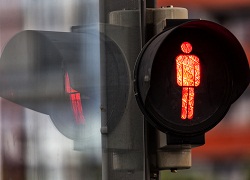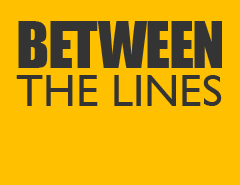 The reasons why each and every trade should be taken with a stop loss is a subject we’ve covered in these columns previously. But occasionally, particularly for our newest readers, it’s worth reminding ourselves why we should use stops on each and every trade.
The reasons why each and every trade should be taken with a stop loss is a subject we’ve covered in these columns previously. But occasionally, particularly for our newest readers, it’s worth reminding ourselves why we should use stops on each and every trade.
Quite simply if we accept the notion that our business is an insecure activity, that has no guarantees on offer at all, then we need to combat that insecure environment (that has no guarantees) by protecting ourselves at all time. Stops offer that security and guarantee as we know that we can only lose ‘x’ amount of our account per trade if we use a stop. Controlling our risk and money management is key to both our survival and success in this industry and this element of control can only be exercised by using stops.
The argument versus using stops are quite frankly ridiculous, the most ridiculous of which that has stood the test of time since web based trading went mainstream approximately fifteen years ago goes something like this; “if you use stops your broker knows where your stop order is and will stop hunt you.” How this absurd nation has grown to become a trading myth is a mystery to many successful and experienced traders, but it’s worth countering.
The market hunts stops by accident as opposed to design, neither your broker, nor the banks the orders are routed through via an ECN or STP business model, hunt stops. Consider this as an example; currently the price quoted for EUR/USD is very close to 13800, it doesn’t take too much imagination to realise that many institutional level orders will be clustered at this critical psychological number.
Whether buy, sell or take profit limit orders this level is undeniably absolutely critical. Therefore if we were to take a trade and use this key number as our stop then it’s fair to say that we could be inviting trouble in as much as the likelihood of any order being triggered at this level is highly likely. Coincidentally 13800 might have proven to be a terrific level to place a short trade if we believed the bias was to the downside, but placing stops at this level might be courting trouble.
So moving aside our reluctance and care not to place stops near looming or round numbers where else should we look to place our stops, should we look for numbers and levels or look for hints from the most recent price action, or should we use both elements in order to select where we place our stops? Without a doubt we should use a combination of prediction and evidence based on the recent price action.
Recent highs, recent lows and looming round numbers
Where we place our stops often depends on the time frame that we’re trading off. For example, we wouldn’t use the same strategy if trading off five minute charts looking to ‘scalp’ as we would day trading, or for swing-trend trading. But for day trading, perhaps trading off one hour charts, or for swing trading the principles are generally the same. We’d be looking for turning points as evidenced by the price action illustrating recent highs of recent lows and place our stops accordingly.
If going short on a swing trading basis we’d place our stop near the most recent high paying attention to looming round numbers. For example, if we’d have taken a long swing trade on April 8th on EUR/USD we’d have placed our stop at or close to 13680, the most recent low. Our long entry would have been triggered, according to the overall strategy we suggest in our is the trend still your friend weekly article, at approx. 13750, therefore our risk would be 70 pips. Naturally we would then use a position size calculation to ensure that our risk on this trade is only 1%. If we had an account size of $7,000 our risk would be 1% or $70 approximately a risk of 1 pip per dollar. Let’s now look at at day trade using the same security recently.
Looking at a four hour chart our preference would have been to short the market based on the price action developed since yesterday. We’d identify the recent high of approx. 13900 which is not the exact position which we’d place our stop given our concerns over looming round numbers. Therefore we may wish to place our stop above or slightly below this round number. According to our method we’d have gone short at 13860 therefore our risk would be 40+ pips. Again we’d use a position size calculator to determine the cash risked based on the percentage risk we’d decided on in our trading plan. If we had an account of $8,000 we’d be risking 1% or $80 therefore our risk would be approximately $2 per pip based on a forty pip stop loss. It really is this simple to place our stops and calculate our risk per trade. But what if we decide to scalp, can we use similar methods? Probably not as it gets a lot more complex, allow us to explain..
If we are scalping, which in terms of retail trading, means taking trades off the lower time frames, such as 3-5 minute time frames, then we have to use a significantly different technique as quite frankly we simply don’t have the time and luxury of being able to calculate recent lows or highs. And given that we could find ourselves trading ‘between the lines’ of ranges an argument could be put forward that trying to pick highs and lows inside a range is pointless.
Therefore we have to employ an entirely different strategy to calculate our stops, based more on a risk versus potential return. Therefore we may prefer to adopt what we’ve termed previously in our columns a ‘fire and forget’ strategy. If we do adopt such a strategy we’ll enter our trades looking for an approximate 1:1 risk versus return. We’ll perhaps use a trailing stop to reduce losses to a minimum but be looking for a 10-15 pip return (minus spreads and commissions) and a similar level of pips risk. But whatever the time frame stops are essential and without a doubt they become more critical the lower down the time frames we operate on.





